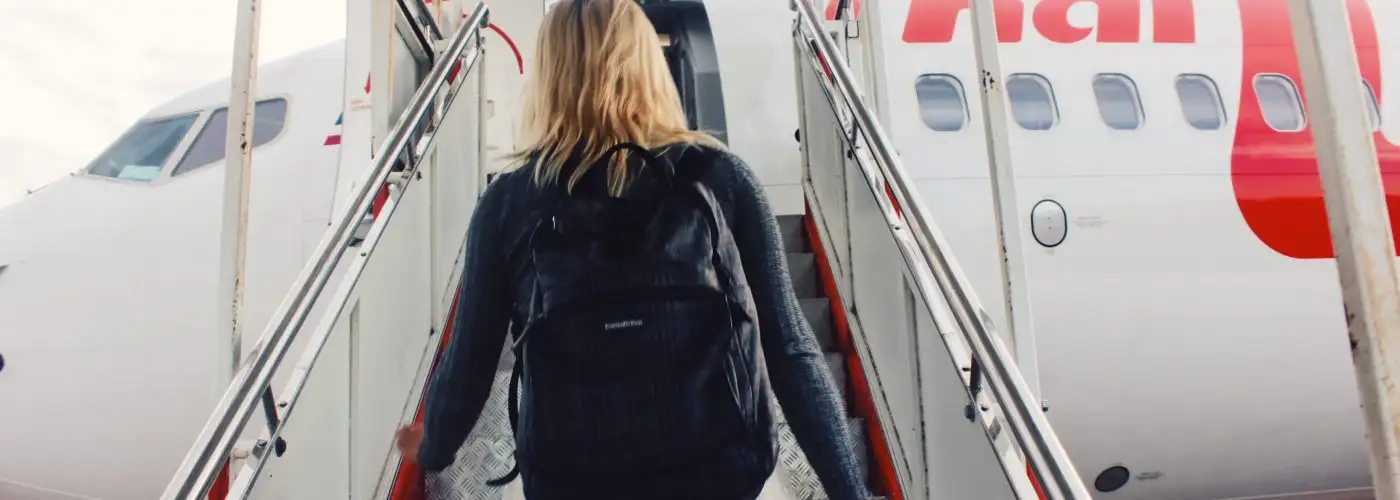If you’re intent on staying healthy, don’t fly commercial. Or rather, don’t board a commercial flight.
It’s well known that flying exposes passengers to other passengers’ infectious diseases, as many travelers are forced into close contact in a confined space for extended periods of time. Planes are breeding grounds for airborne ailments. That’s onboard. But there has been little or no attention given to the boarding process itself.
According to a new study by Arizona State University, the current industry boarding practice—loading passengers according to class, by zone—is the worst possible approach to filling a plane from a health standpoint. “The reason this works so poorly is that it forces passengers to stand together in the aisle while they all wait to get to their seats, which means more time for a tightly packed group to be exposed to the contagious passenger.”
The study developed a model that predicted how many passengers would be infected by a single Ebola carrier under a variety of boarding conditions. The optimal approach, from a contagion standpoint, turned out to be dividing the plane into two sections and having passengers randomly board within the sections. “By preventing any hallway bottlenecks and keeping passengers from being next to any one person for very long, this approach results in the lowest number of new infections.”
In the case of a hypothetical Ebola outbreak, the model showed that the chances of infection rates reaching 20 cases per month dropped from 67 percent under the current boarding process to 40 percent under the two-section random boarding approach. Presumably similar improvements would be found for more common ailments like flu and the common cold.
While the study results have been shared with the airlines and the government, flyers aren’t likely to see the proposed boarding process adopted by the airlines, except perhaps in the event of a pandemic, like the Ebola outbreak in 2014-2015. The airlines, for operational and financial reasons, are invested in maximizing the speed of boarding, never mind the health downside.
There is a takeaway for travelers who are concerned about getting sick on the road. Rather than joining the boarding queue as soon as you’re allowed to do so, wait until the line thins out, toward the end of the boarding process. Less congestion should mean less chance of infection.
There’s a downside to waiting to board, of course: You’ll miss the chance to store your carry-on in an overhead bin. Just another travel dilemma: Your health or your ability to stow your bag.
Reader Reality Check
Are you one of those travelers who always gets sick after a flight?
More from SmarterTravel:
- Dine Out, Earn a $15 Gift Card from Amazon, Starbucks, Uber
- How to Use Hilton Points to Shop on Amazon
- American or Southwest: Which Is the Real No-Frills Airline?
After 20 years working in the travel industry, and 15 years writing about it, Tim Winship knows a thing or two about travel. Follow him on Twitter @twinship.
We hand-pick everything we recommend and select items through testing and reviews. Some products are sent to us free of charge with no incentive to offer a favorable review. We offer our unbiased opinions and do not accept compensation to review products. All items are in stock and prices are accurate at the time of publication. If you buy something through our links, we may earn a commission.
Related
Top Fares From
Today's Top Travel Deals
Brought to you by ShermansTravel
Shop and Save with Country Inns...
Patricia Magaña
 Hotel & Lodging Deals
Hotel & Lodging Deals
$229 -- Chicago: Discounted Rates and...
Francesca Miele
 Hotel & Lodging Deals
$229+
Hotel & Lodging Deals
$229+
$188 -- Honolulu: Save on Oceanview...
Abigail Lamay
 Hotel & Lodging Deals
$188+
Hotel & Lodging Deals
$188+




